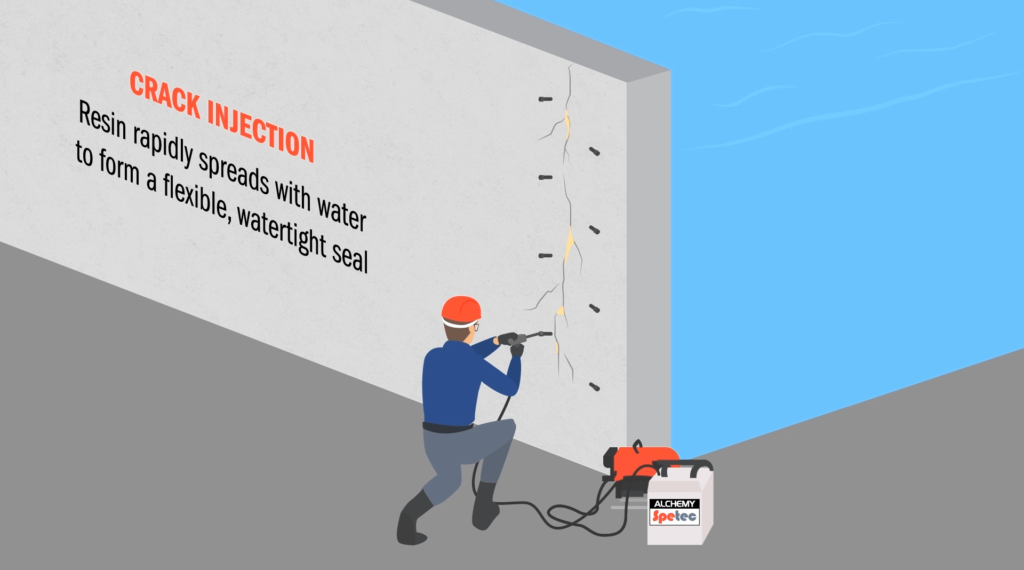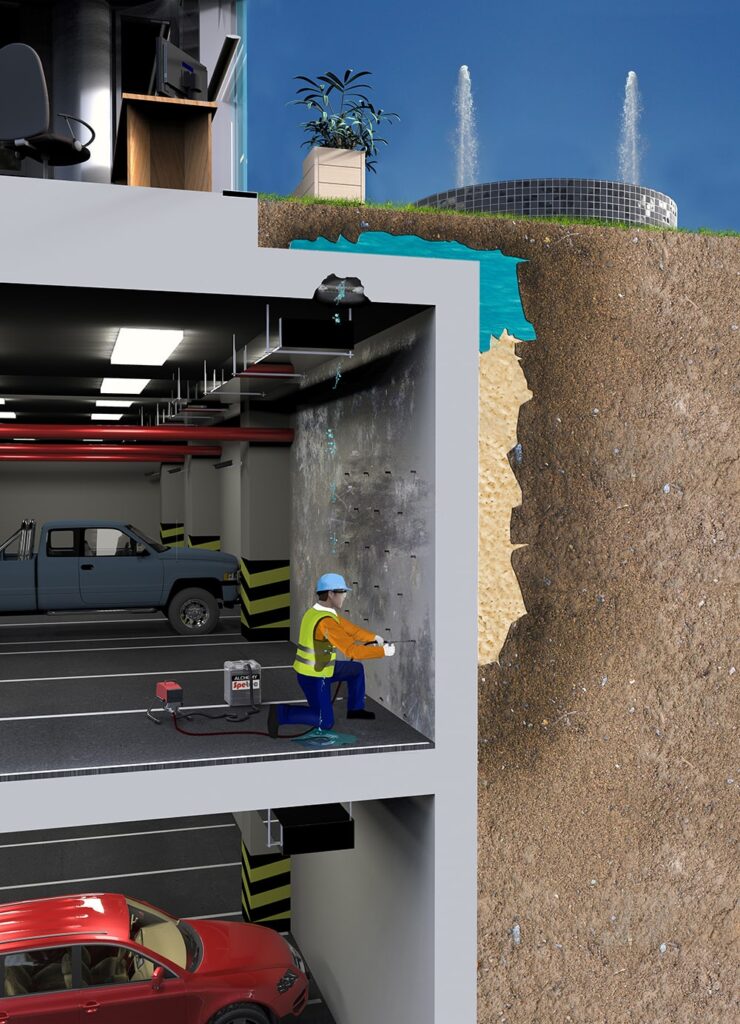Waterproofing Leak Detection and Repair
Leaks are a common area of concern for all commercial properties, causing the structural integrity of concrete elements to decline steadily over time. Leaks through cracks not only affect the serviceability of the structure, it can lead to long-term structural issues due to concrete cancer (reinforcement rusting) and concrete spalling.
What Types of Leaks occur
Together with our engineering partners we are able to identify the underlying causes of the leaks and provide the appropriate rectification methods to push moisture out of existing concrete elements and provide a seal preventing the leaks from causing further damage to the structure. This is generally achieved by using either a two-part polyurethane injection, or a single-part polyurethane resin that reacts with water and moisture. This also provides water proofing to the negative side of the wall, ensuring a long-term solution.
Scenario One:
A suspended slab with a roof top terrace and garden bed:
If minor cracks occur, and the water in the rain garden leaks into the apartment below there are two options. Option 1 is to remove all trees, vegetation and soil, and strip all waterproofing. Once all stripped, the area is to be cleaned, dried and waterproofing reapplied. Only once this is done, can the garden bed be reinstated, and terrace re-opened for public access. This requires permanen closure of affected area, it is also time consuming and expensive. Option 2 is to inject polyurethane resin into the crack from apartment below; until the crack is fully sealed and the water leak has stopped, providing a permanent waterproof seal. This is not only non-invasive, it will only take a day or two to complete.
Scenario Two:
A basement wall on a site boundary has a leak through it. There are 3 options: Option 1 is to expose the wall from the leaking side, this will require access to the neighbouring property and the use of heavy machinery to expose the wall and re-apply waterproofing. This will require permits and permission from your neighbour, will be very costly and may take weeks. Option 2 is to create a false wall, or provide a seal on basement wall so no leaks are visible. However, since water is still entering the crack, this will lead to concrete cancer and long term structural issues. Option 3 is to high pressure inject polyurethane resin into the crack, not only sealing the crack but also providing a negative side waterproof seal.

Our engineers will do a site investigation to discover the extent of the leak and if any damage has occurred to the existing concrete reinforcement.

Ports are drilled on a 45 degree angle towards the crack on either side. Then, either a two component or a single component polyurethane resin is adopted. If water is seasonal, then a two part is adopted, since the single part may shrink in the absence of water.

Using high pressure, the resin is injected through ports. The injection of resin is sequenced from the ports along smallest crack width towards ports beside larger crack width.

Any excess resin is carefully removed. The ports are removed and the holes are re-grouted with a high strength, waterproof adhesive grout.
We expect that leak sealing should take a day.

